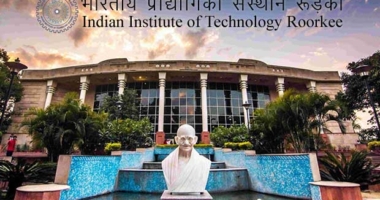A digital transcript sharing company, Parchment, acquired Quottly, a company that sells software for course and program sharing, managing dual enrollment, and automating and streamlining transfer agreements. Leaders of the companies say that combining their operations can help institutions better handle the many moving parts of the transfer process and make students’ transition from one institution to another more efficient. Leaders hope their union helps students move among higher ed institutions with more ease. The platform automates the course evaluation and approval process for administrators, and students have a dashboard where they can search shared and transferable courses between institutions. Policinski believes that technology needs to work in support of policy improvements being enacted, while Pittinsky sees technology as a complementary solution to transfer policies. Combining tools for transcript exchange and taking the data that are inside of transcripts to help students transfer successfully is an exciting prospect.
Using Technology to Ease Transfer Connections
Parchment, a digital transcript sharing company, has recently acquired Quottly, a software company that offers solutions for course and program sharing, dual enrollment management, and transfer agreements streamlining. The merger aims to help students transfer among higher education institutions with more ease.
Combining the operations of both companies can enable institutions to handle the many complexities of the transfer process and make students’ transition from one institution to another more efficient. This move responds to the demand for a more comprehensive transfer management platform, especially when universities are utilizing multiple, disparate digital tools.
According to the US Government Accountability Office, transfer students lose an average of 43% of their credits. Meanwhile, the American Association of Collegiate Registrars and Admissions Officers’ 2021 report states that fewer than a quarter of colleges and universities share transcripts with each other electronically. Only about half of colleges and universities in the US have automated articulation rules that apply to course credits.
Matthew Pittinsky, CEO of Parchment, points out that transferring credits is the most common reason students request digital transcripts through Parchment. He sees the acquisition as an opportunity to tap into an “underserved technology market” and meet the demands of college leaders who are making transfer a bigger part of their enrollment strategy due to the pandemic enrollment decline.
While both platforms will still be available separately, the merger will create better connections between them, and they will have additional capabilities because of the overall capabilities of the combined organization. Pittinsky also recognizes that getting student records together and evaluating course credits is a big point of friction for transfer students, and the acquisition will help to address this issue.
In summary, the collaboration between Parchment and Quottly will create a more comprehensive transfer management platform to streamline the transfer process and ensure students’ success.
Quottly Acquisition Brings Seamless Transfer Experience
Parchment, a leading digital transcript sharing company, has acquired Quottly, a software company that sells solutions for course and program sharing, dual enrollment management, and transfer agreement streamlining. The acquisition aims to help students transfer among higher education institutions with more ease by combining the operations of both companies.
According to Alicia Policinski, CEO and co-founder at Quottly, the acquisition brings a more seamless student experience and a seamless administrator experience to a wider network of college and university systems and their students. The platform automates the course evaluation and approval process for administrators, and students have a dashboard where they can search shared and transferable courses between institutions. Policinski said the wider the network of colleges using the platform becomes, the more useful it is.
Parchment currently serves about 2,800 colleges and universities in the US and more than 100 higher ed institutions abroad. In comparison, Quottly is a much smaller operation working with over 220 colleges and universities, including the Montana University System, the University System of Maryland, and California Virtual Campus.
Policinski said she wishes the institutions she attended had access to this software when she was a transfer student. Policinski took an extra year of school because she miscounted one course, and tuition was expensive.
Sarah Zauner, executive director of the Ada Center, believes that colleges need viable technology tools that comprehensively support student transfer, given the maze of piecemeal options currently available to handle different parts of the process. While the acquisition is good news, technology can only do so much when institution-level transfer policies remain convoluted and decentralized. Often faculty members are evaluating courses, academic advisers are guiding students, and administrators are making higher-level policy decisions. Meanwhile, students, not knowing where to go for information, turn to the internet.
Zauner believes that the acquisition is a signal that the private sector is realizing the unmet need in the field for a more holistic approach to helping institutions and students design pathways across institutions. However, she added that technology can only codify and ratify messy policies and practices, but it cannot fix them.
In summary, the acquisition of Quottly by Parchment brings a more comprehensive transfer management platform, providing a seamless student experience and a seamless administrator experience to a wider network of colleges and universities. However, technology can only do so much when institution-level transfer policies remain convoluted and decentralized.
Technology as a Complementary Solution to Transfer Policies
While technology can offer major efficiency gains in the transfer process, John Fink, a senior research associate at the Community College Research Center at Columbia University’s Teachers College, believes that the process of colleges working with students early on to plan and explore their interests and know which courses align best with those goals requires advising and program alignment, which are more human-process sorts of things. Therefore, technology cannot replace improving institutional and state transfer policies, but it can help.
Alicia Policinski, CEO and co-founder at Quottly, noted that the platform makes it easier for academic advisers to efficiently and accurately guide students, and students can track how the courses they’ve taken or will take at one institution count toward a specific degree program at another. Technology needs to work in support of policy improvements that states are enacting, such as instituting statewide guaranteed transfer pathways, she said. They can really program the good policy work being done into the software for the benefit of students, as well as administrators.
Matthew Pittinsky, CEO of Parchment, believes that transfer policy solutions only work if universities have the technology to implement them. Colleges cannot give consistent or timely answers to students about what course credits count without a centralized database of which courses are equivalent to each other between institutions. He sees Parchment and Quottly’s offerings as an exciting combination that can help students transfer and get their degree faster and at a lower cost.
In summary, while technology is useful in making transfer more efficient, it cannot replace the need for human-process sorts of things like advising and program alignment. Policinski believes that technology needs to work in support of policy improvements being enacted, while Pittinsky sees technology as a complementary solution to transfer policies. Combining tools for transcript exchange and taking the data that are inside of transcripts to help students transfer successfully is an exciting prospect.
Don’t miss interesting posts on Famousbio








